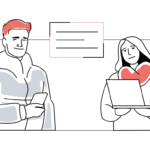Iterative design process
4D + V as verification 🙂
Discover
At the beginning, designers explore a wide range of ideas and possibilities. This involves research, user interviews, brainstorming, and other methods to gather insights and generate creative solutions. Define the problem space by gaining a deep understanding of user pain points, needs, and aspirations. This phase helps designers identify the right problem to solve.
Define
During this step, designers narrow down the options generated in the discovery phase. They analyze the gathered insights, prioritize ideas, and establish a clear design direction. Create a focused and actionable plan that outlines the problem statement, user personas, goals, and constraints.
Develop
The process enters a new cycle of divergence where designers generate a wide range of solutions based on the defined problem and user insights. This may involve sketches, wireframes, and prototyping. Create low-fidelity and high-fidelity prototypes to visualize and evaluate potential solutions. User testing helps validate the designs.
Deliver
Select the most effective and feasible solution based on user feedback and testing results. Refine and finalize the design. Develop a plan for the execution and delivery of the final product or solution. This may involve collaboration with developers, stakeholders, and other relevant parties.
Verification
Process implementation status
Unfortunately, I did not have time to implement the process due to sudden changes in the company. Perhaps the new UX team leader will return to the topic. I hope so 🙂







